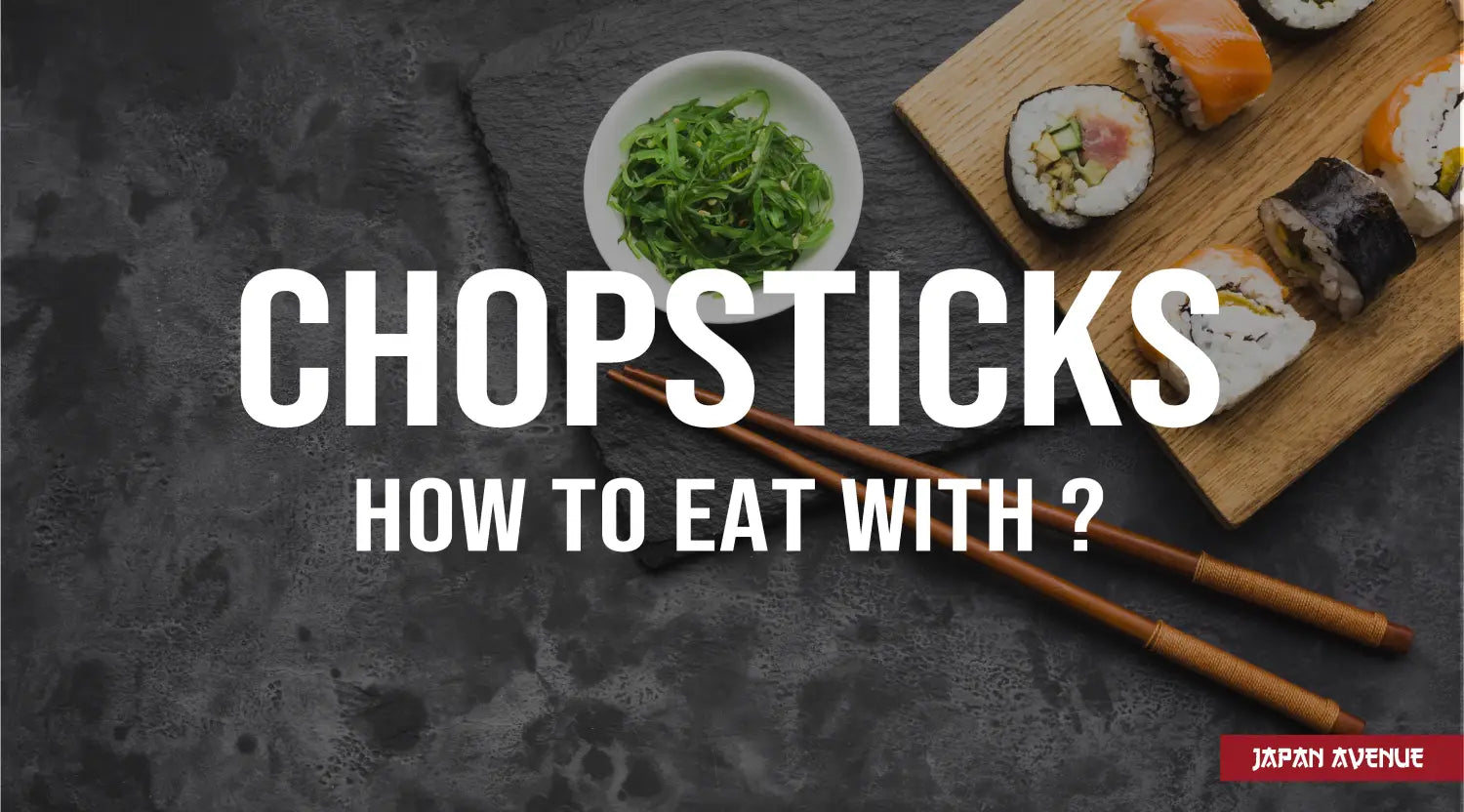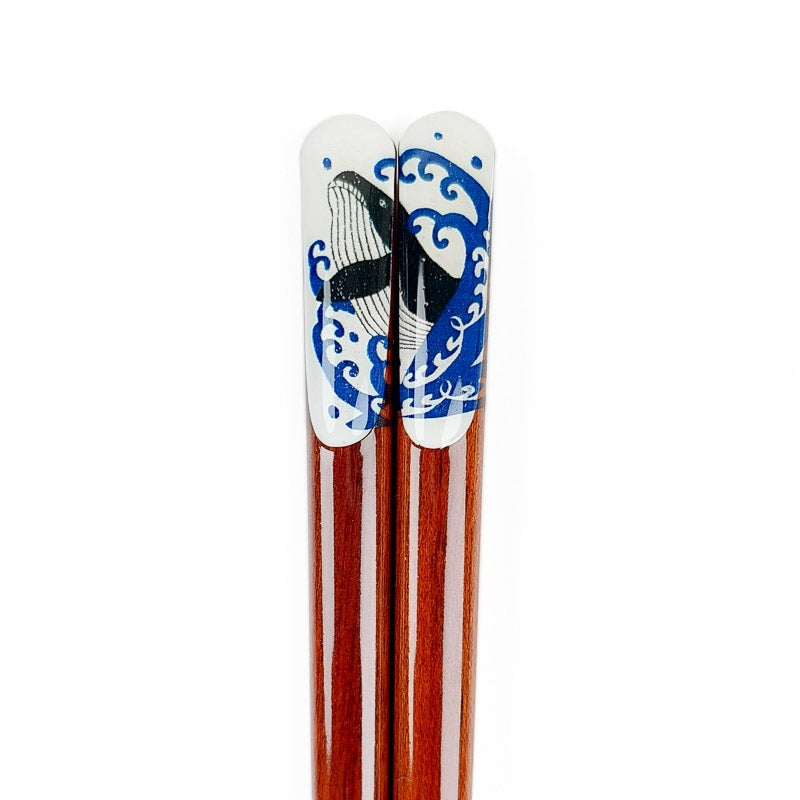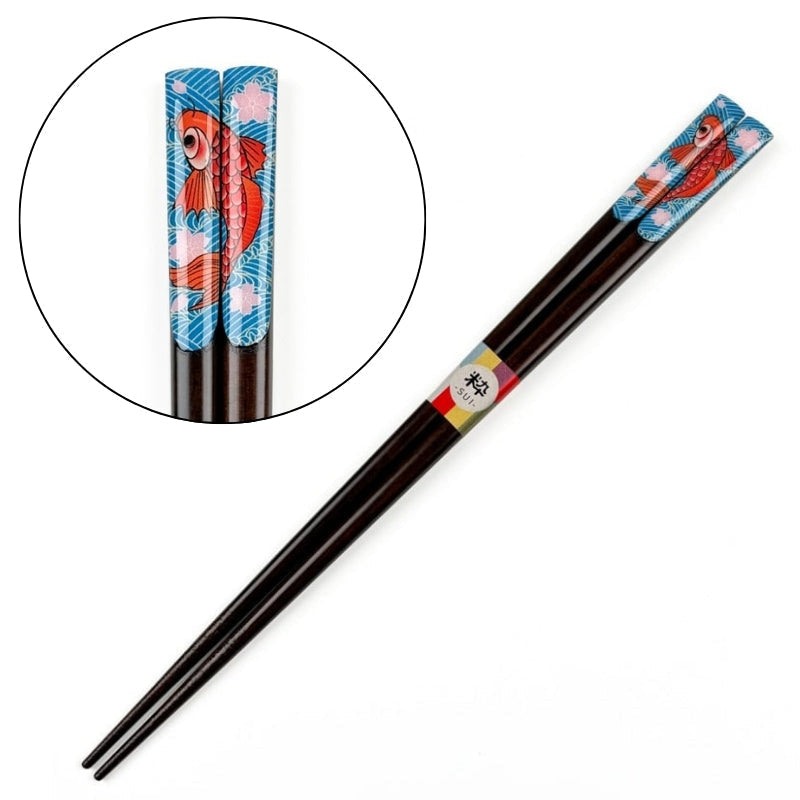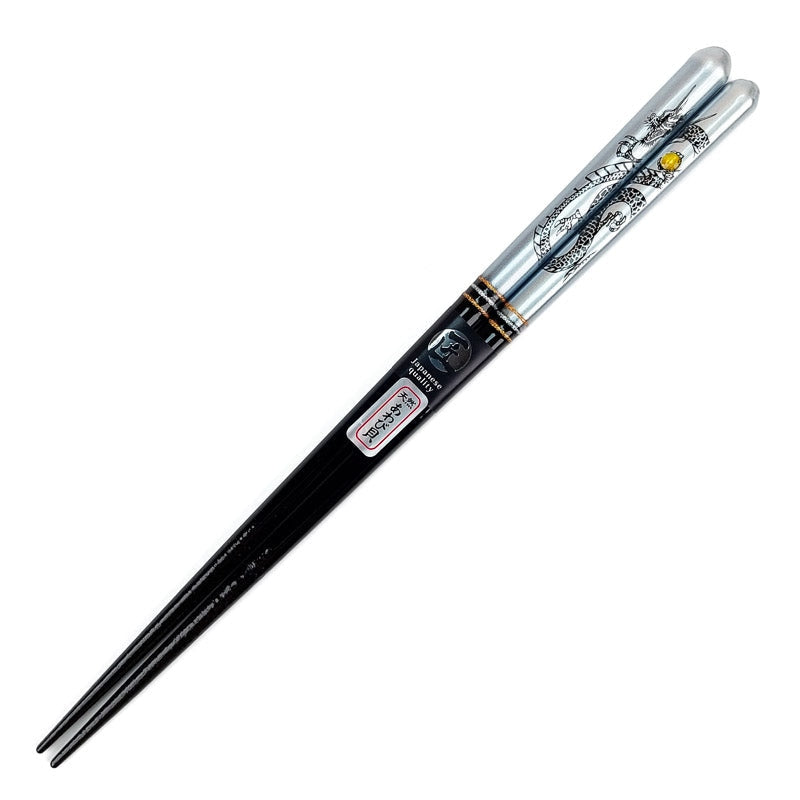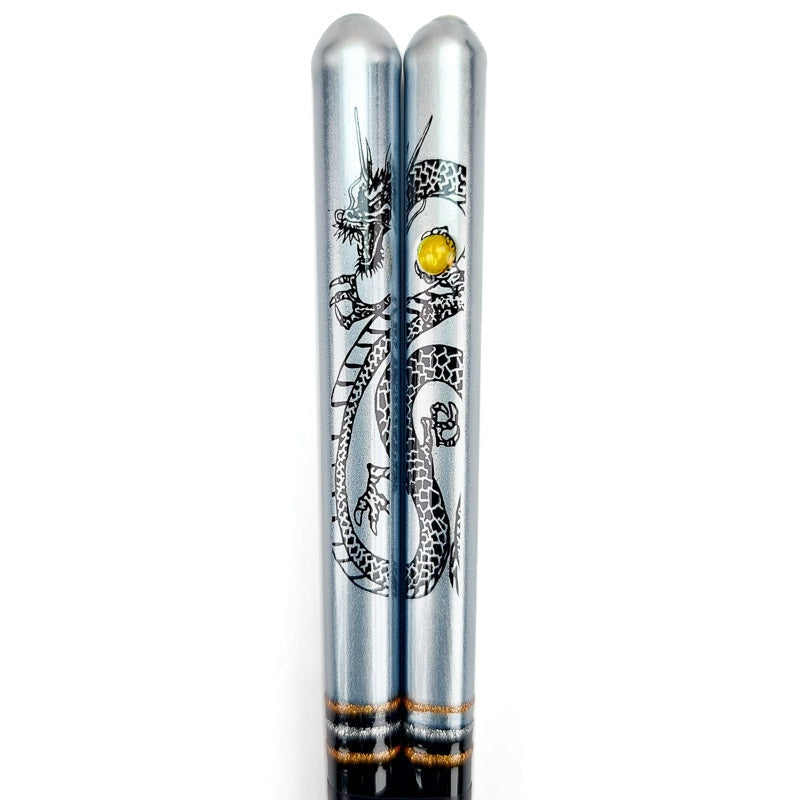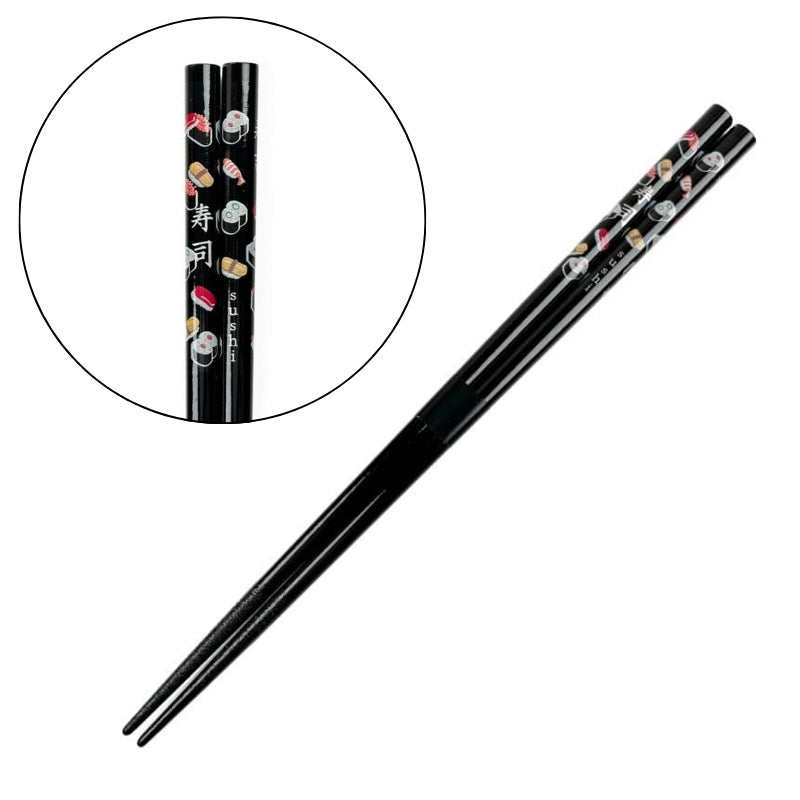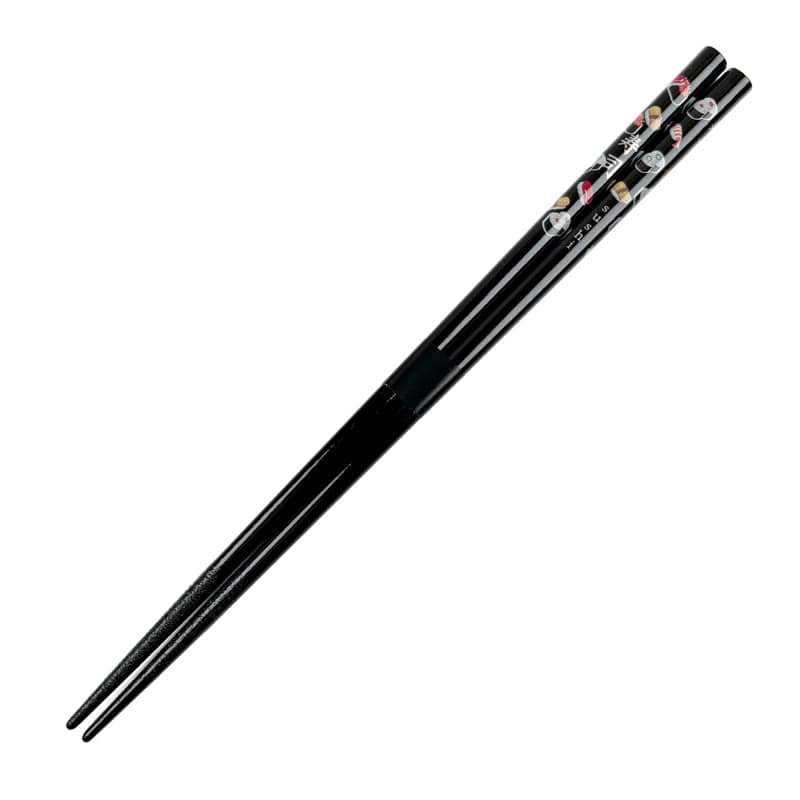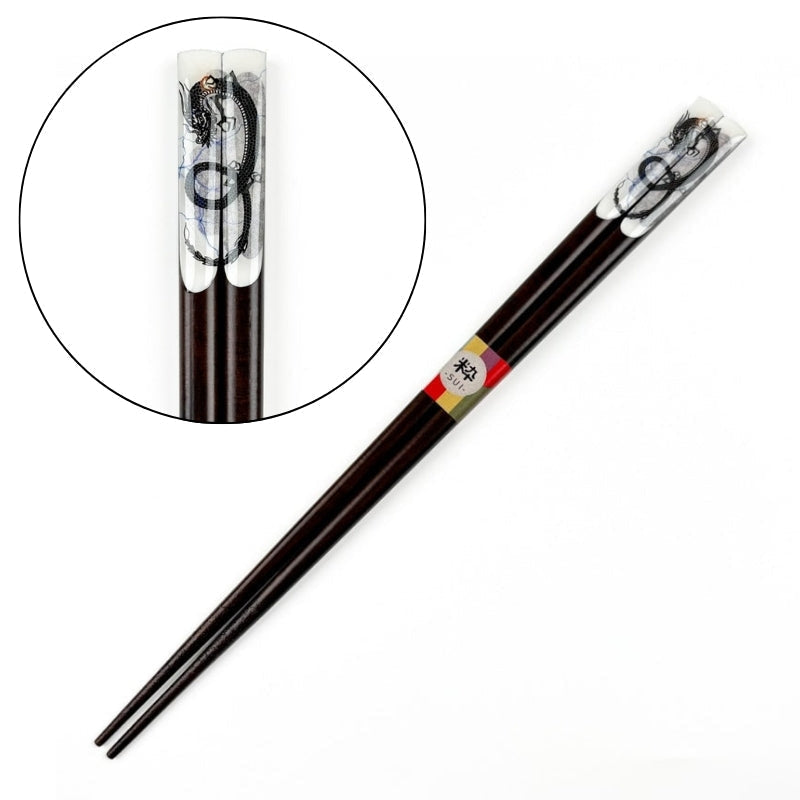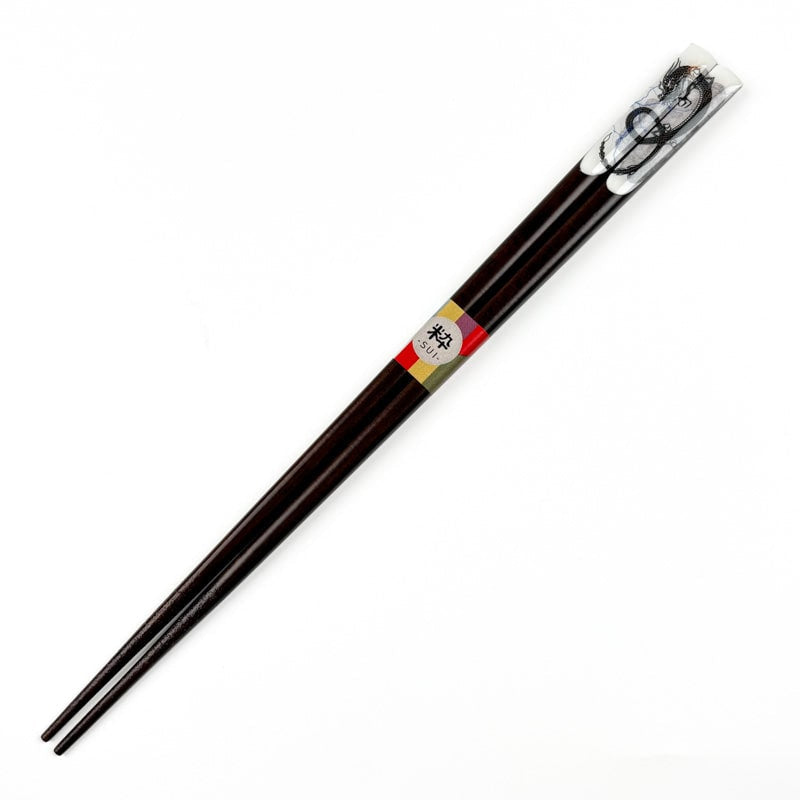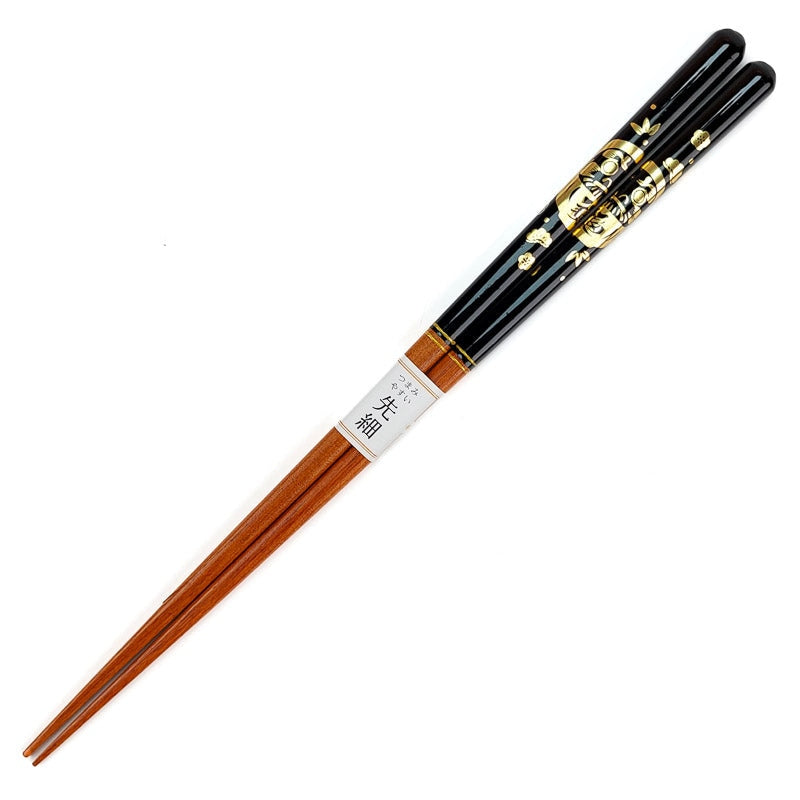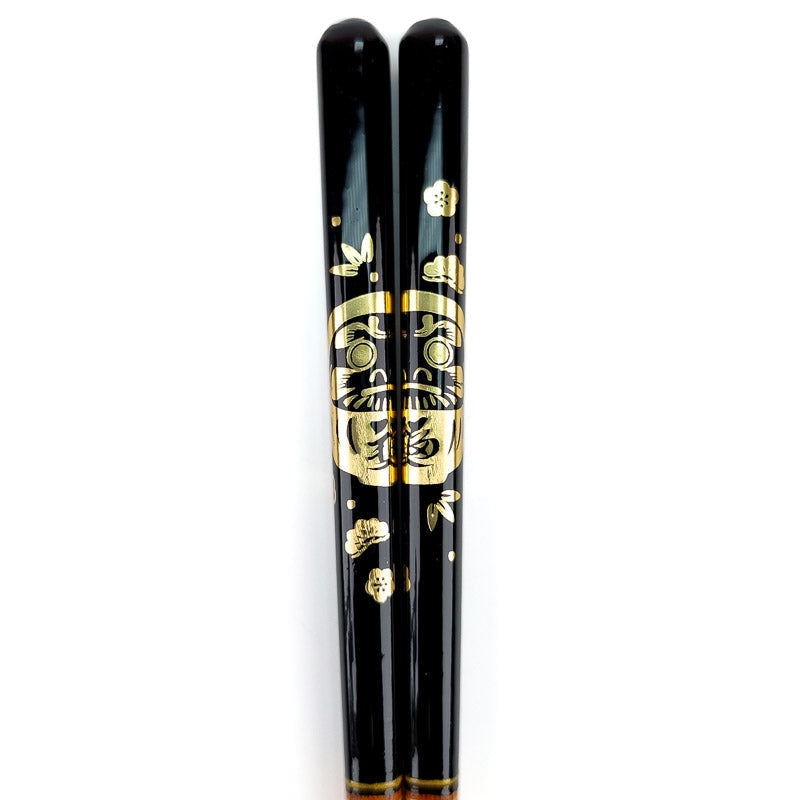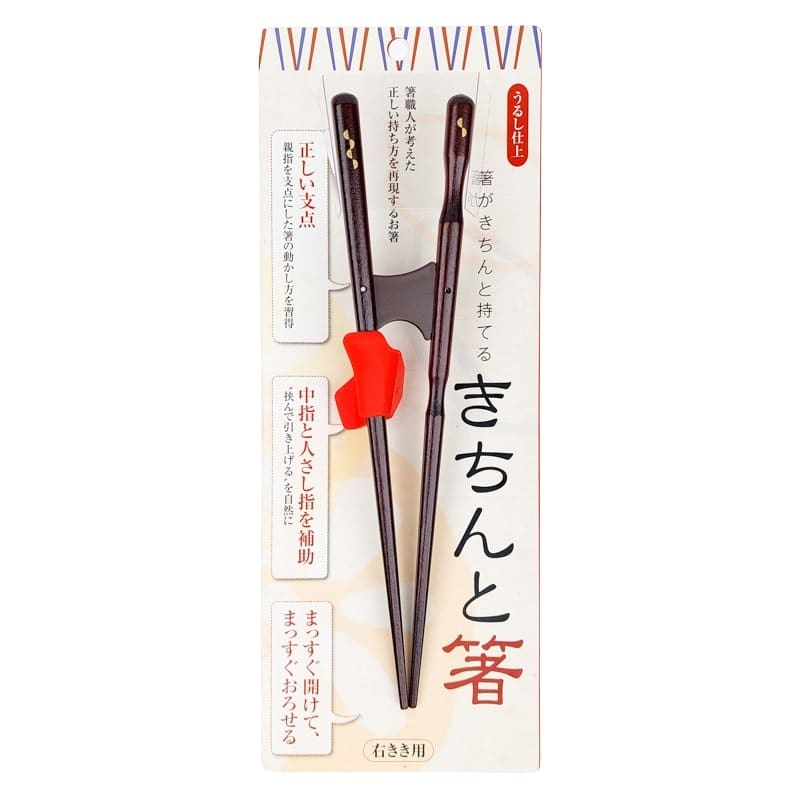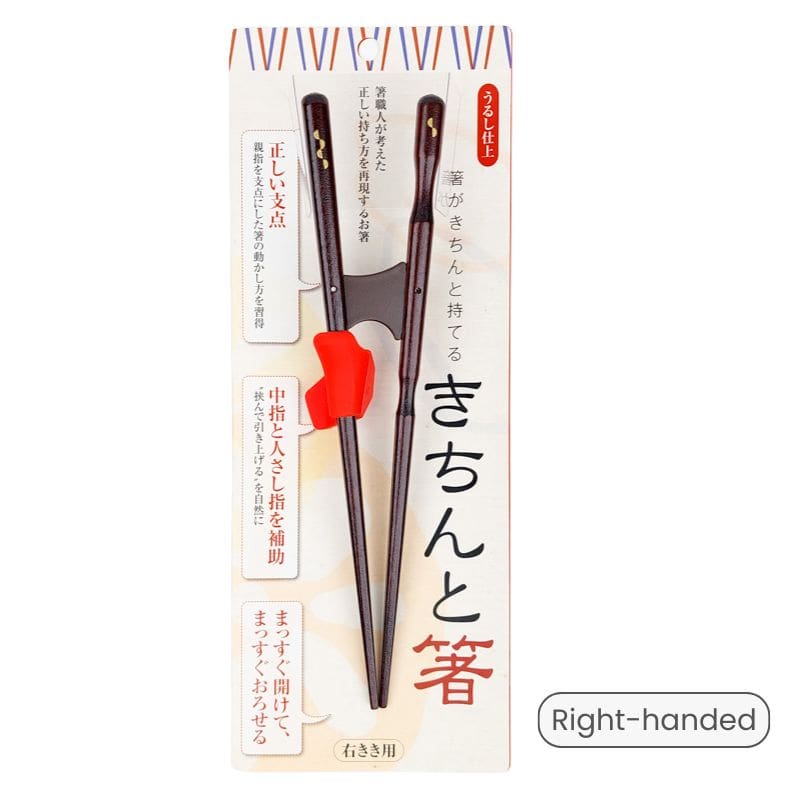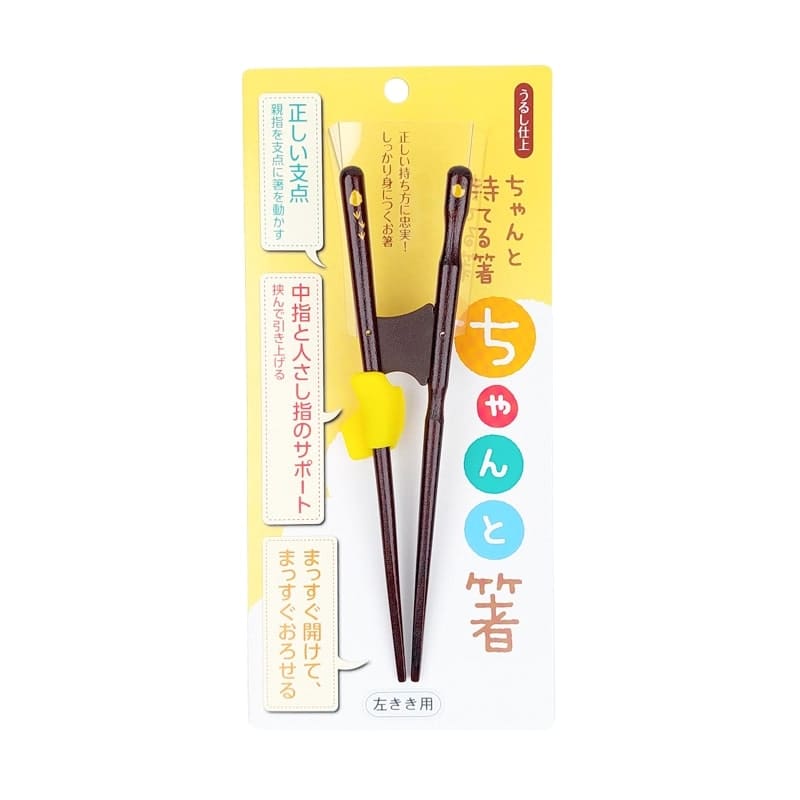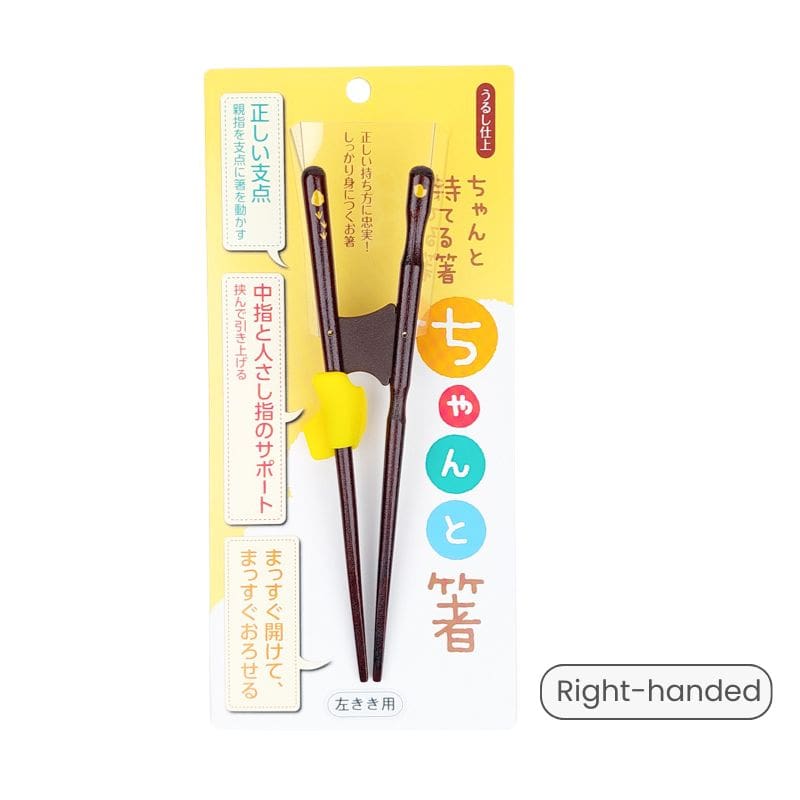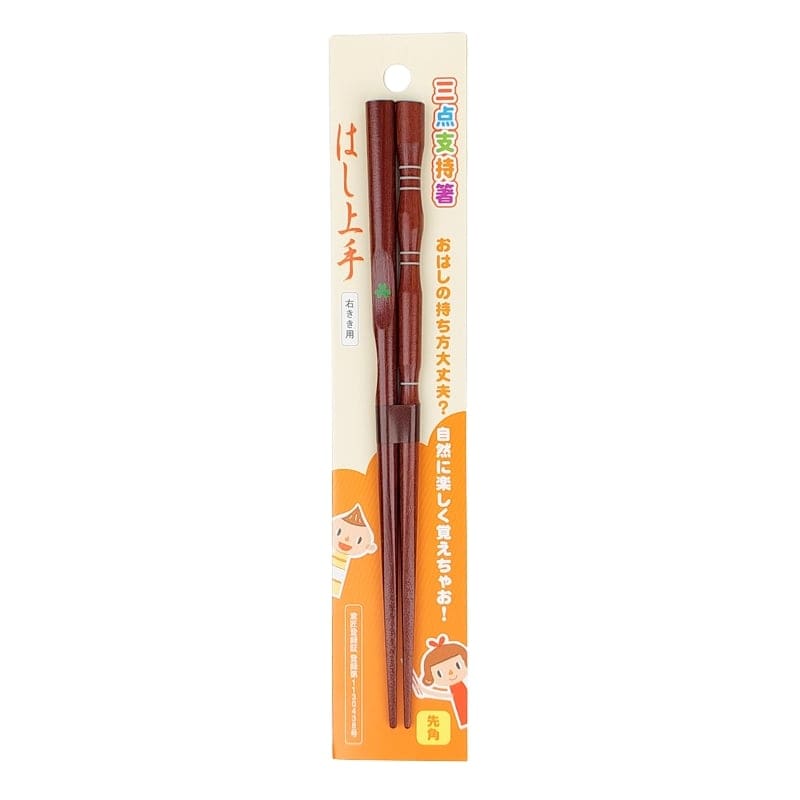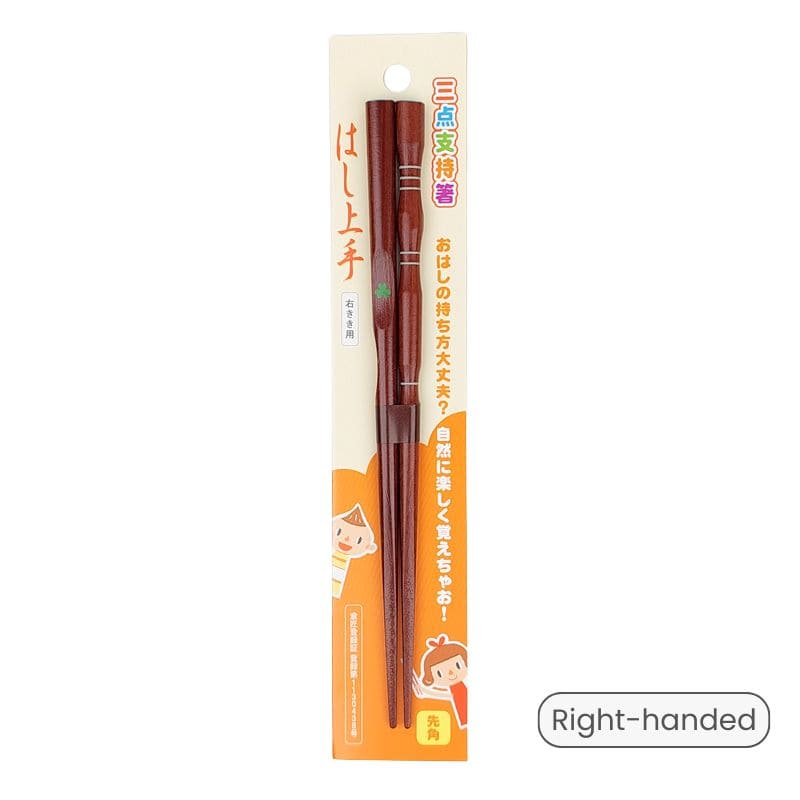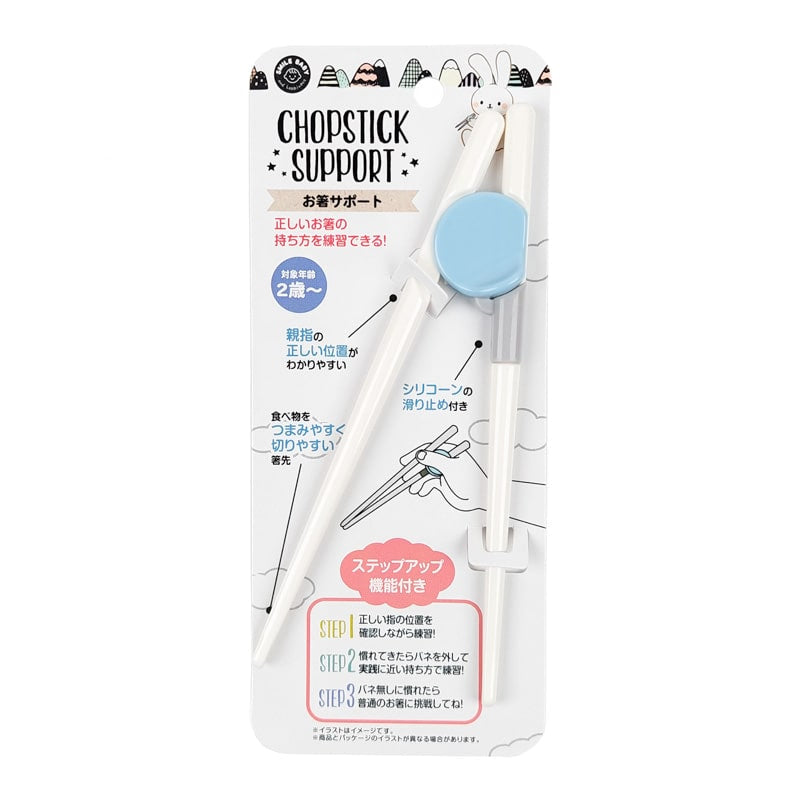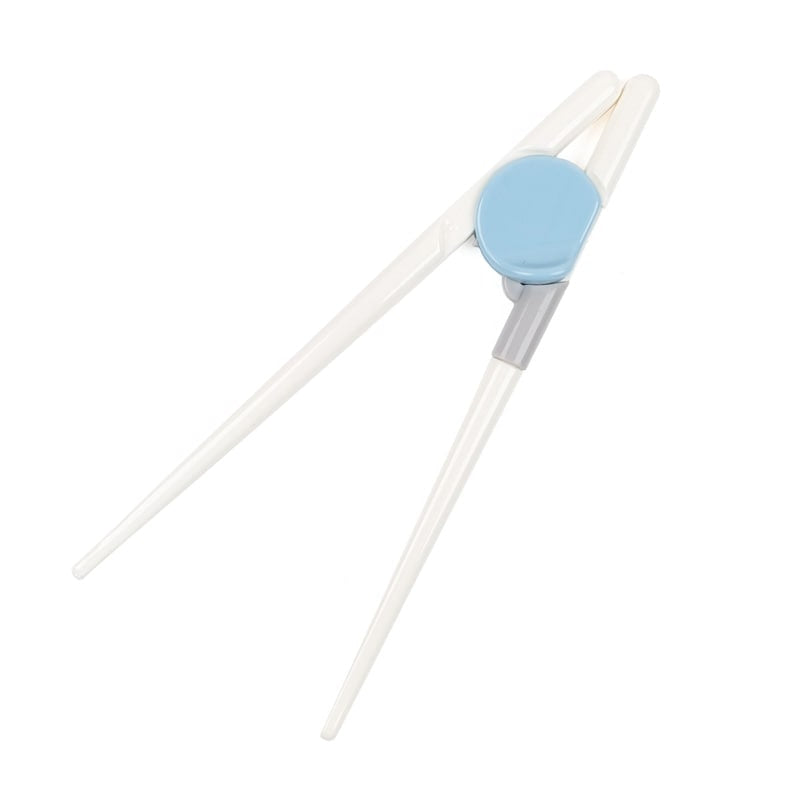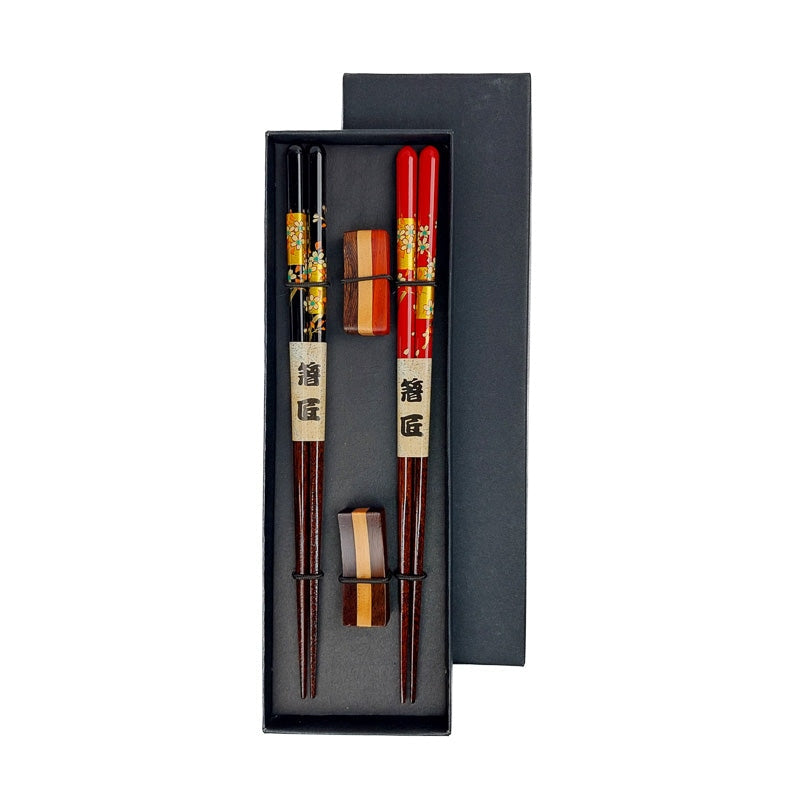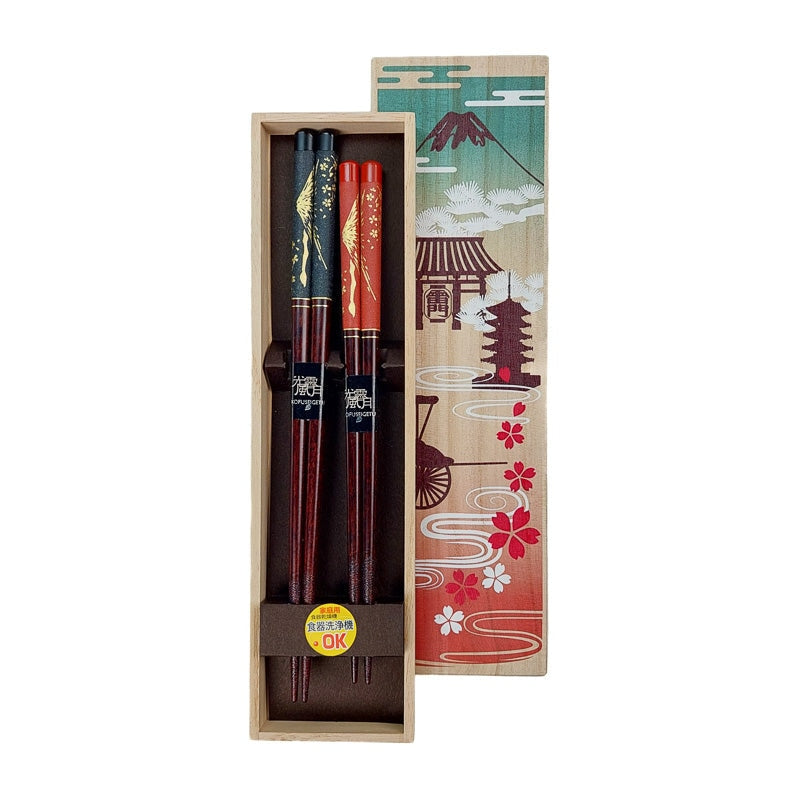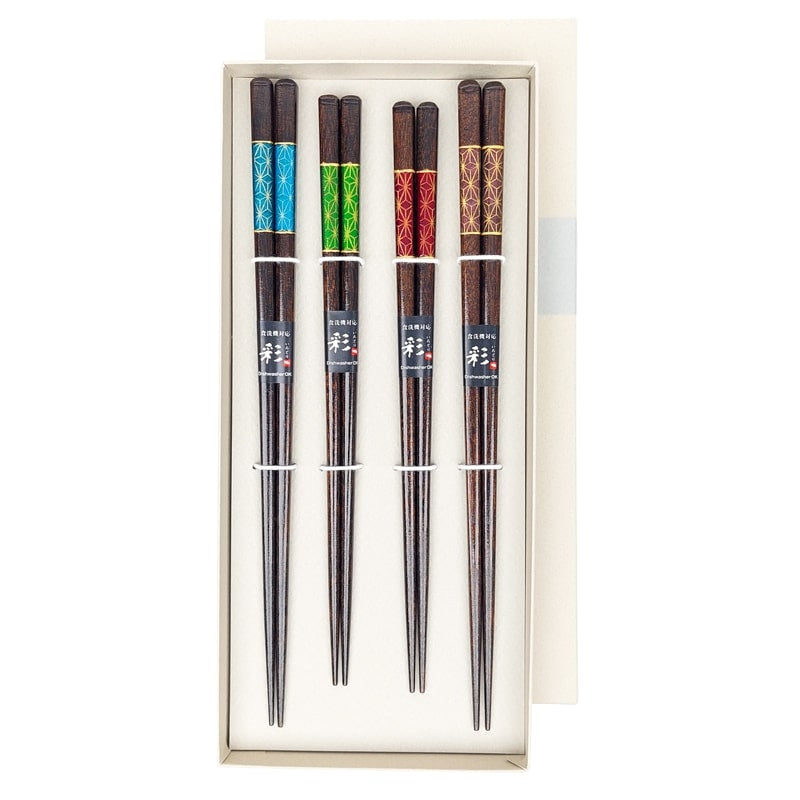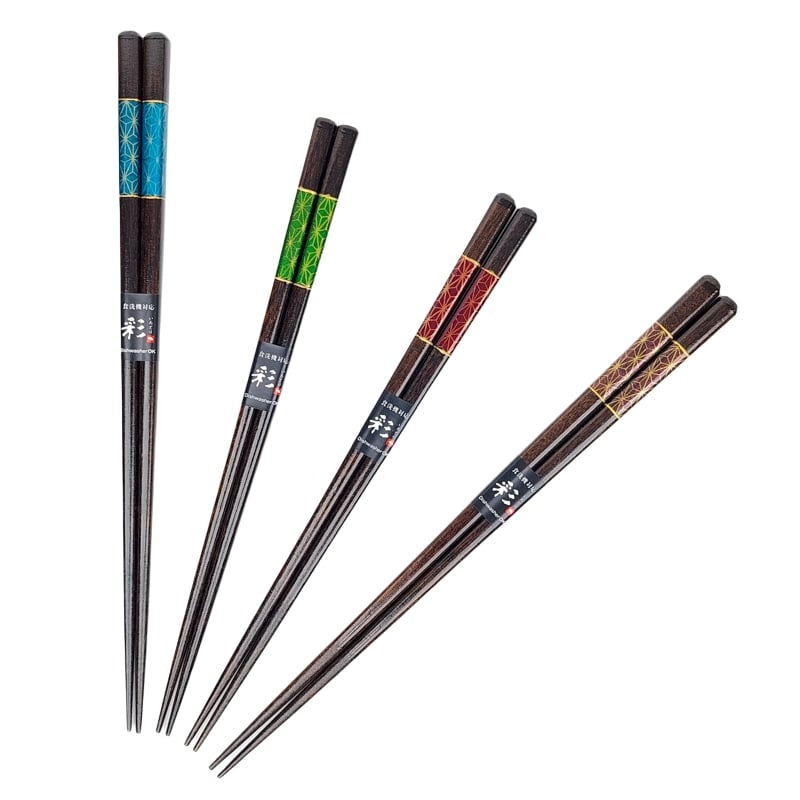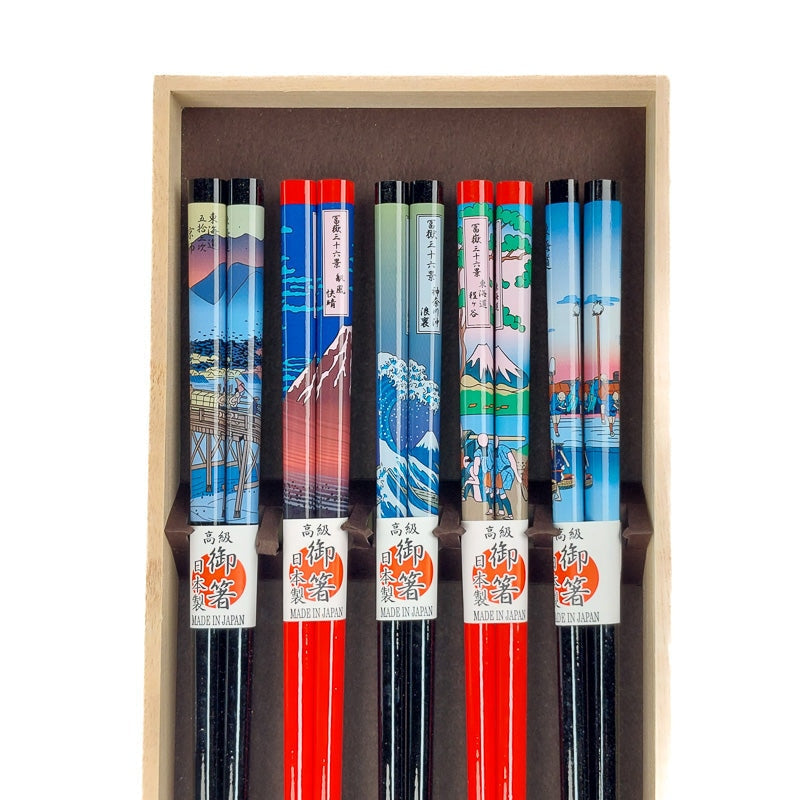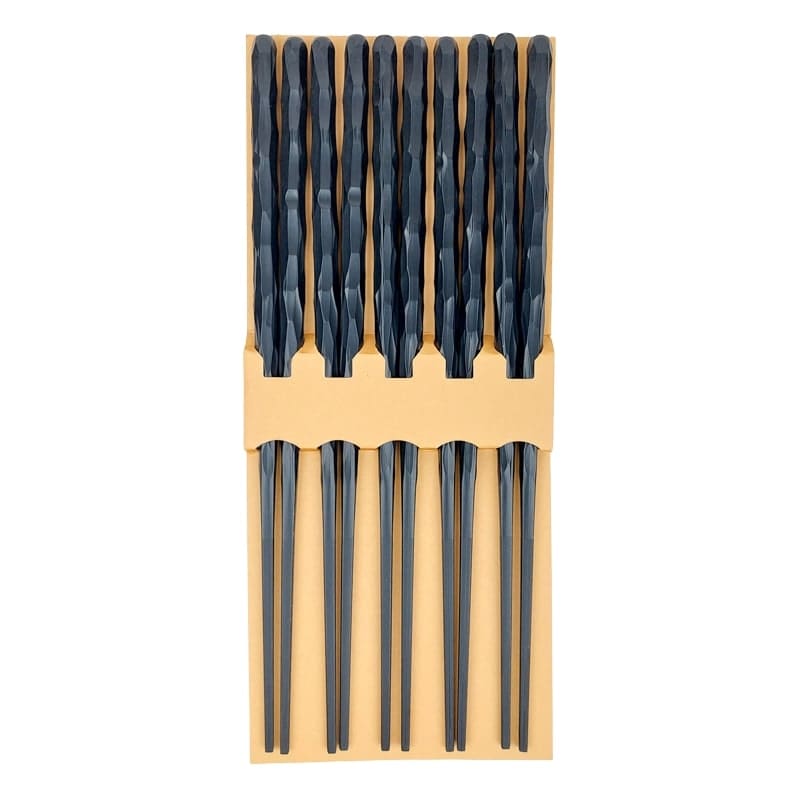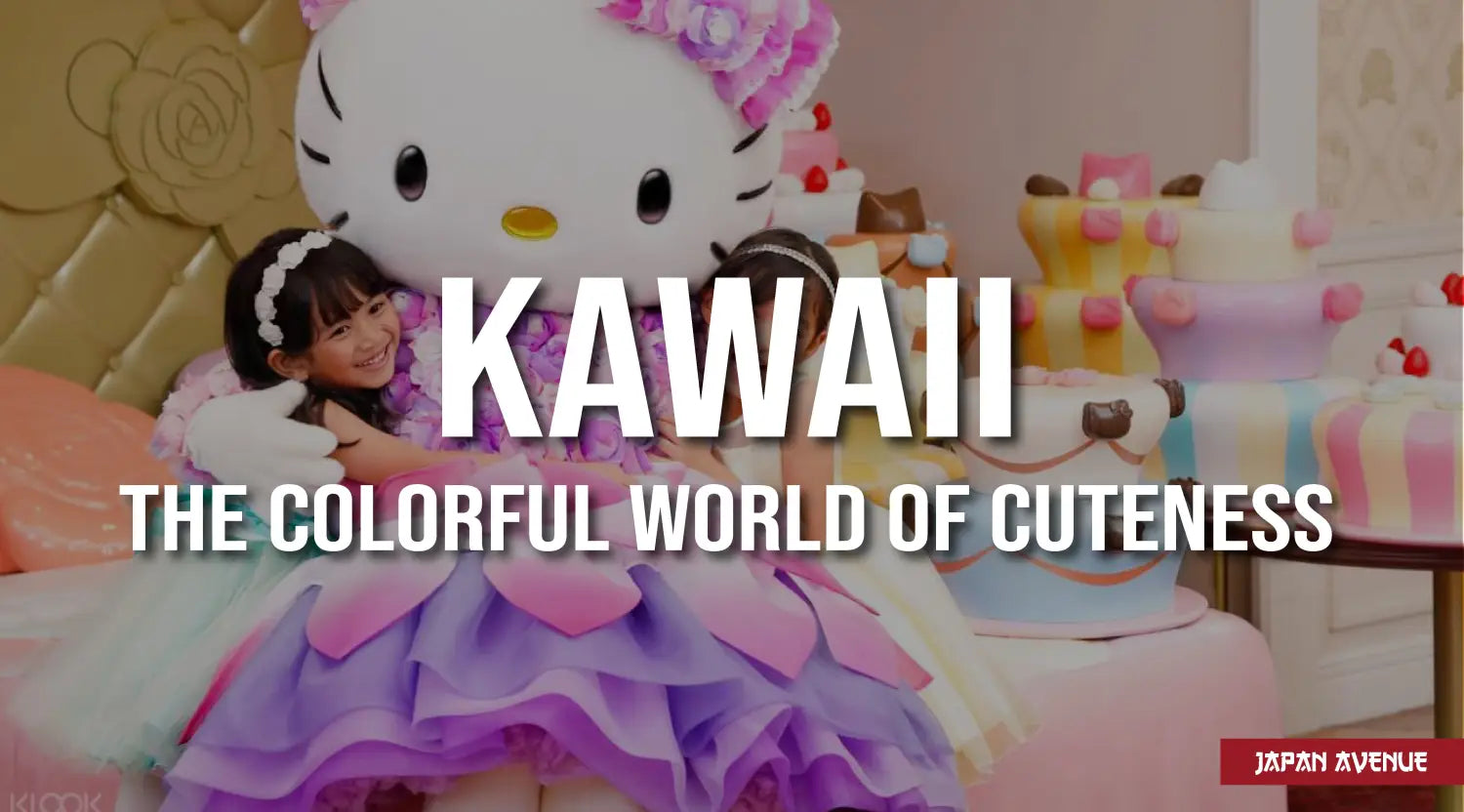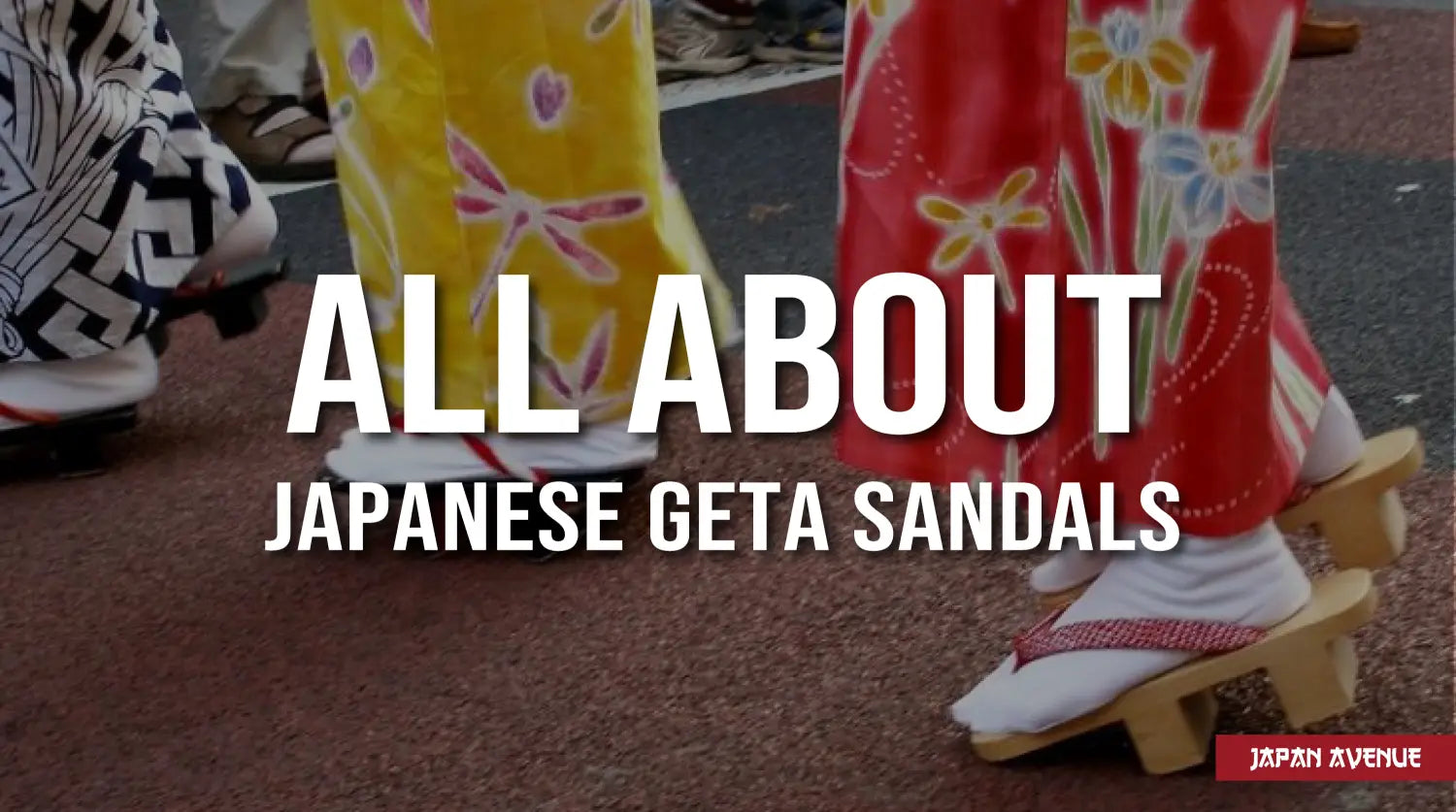In 2009, a study in Japan revealed that out of more than 1800 Japanese people surveyed, only 54% knew how to use a pair of Japanese chopsticks the right way. In Tokyo, there are now seminars to teach adults how to use chopsticks correctly.
More and more people are paying attention to good table manners, especially since "washoku", the traditional Japanese cuisine, is listed as a UNESCO World Heritage Site. So, if you are one of those westerners that struggle with a pair of Japanese chopsticks in hands, you can be reassured!
However, to pay tribute to Japanese cuisine and its exciting culture, we are going to make sure that you become a master in the art of using Japanese chopsticks by the end of this article. Besides discovering the technique to hold chopsticks correctly, you will also learn some basic rules of table manners in Japan. Also, do not hesitate to check on our Japanese Tableware collection.
Let's get started! 👇
How to hold Japanese chopsticks ?

To use Japanese chopsticks correctly, first of all you have to understand one essential thing: only one of the two chopsticks is movable, the other one should not be moved. The following steps will show you how to hold Japanese chopsticks in place between your fingers:
- Slide one chopstick into the hollow between your thumb and forefinger, then place the front of the chopstick on your ring finger. This chopstick should stay still.
- Grab the second stick between your index, middle finger and thumb, as if you were holding a pen. This chopstick is movable.
- Practice moving the upper stick in a pinching motion with the lower stick remaining stationary. Once you get the hang of it, try picking up some food and then hold it long enough to gently bring it to your mouth.

In order to use chopsticks fluidly, remember to relax your fingers and not to rush. Some of you may tend to squeeze the food very tightly between the chopsticks in fear of slipping out of the grip, but this is a bad idea and the risks are numerous.
If you wish to grab some thick and sticky food, it may slip between the chopsticks and end up on the neighbor's plate. Conversely, if the food is soft, you may squish it between the chopsticks before it reaches your mouth.
Naturally, we don't want either of these situations to happen, which is why it's important to keep your fingers flexible for precise and delicate movements.
| ❓ Did you know? You may use your fingers to grab sushi. 🍣 To do so, use the tips of your index, middle finger and thumb. If you opt for this way of eating, remember to wash your hands first. Japanese people value hygiene, and in some restaurants, you may get hot towels (oshibori) right before your meal. |
For beginners, the wooden or bamboo chopsticks are quite easy to manipulate. There also exist Japanese chopsticks made out of aluminum alloy and fiberglass. These are perfect for beginners, as the material is denser than wood and thus provides a better balance and grip.
The art of eating with Japanese chopsticks

If you are invited to have a meal at someone's home in Japan, it is important to remember a few rules to respect so as not to come across as a rude person.
Here's a list of things not to do 🚫 with Japanese chopsticks when dining in Japan:
- Stick your chopsticks vertically into a bowl of rice (called hotoke-bashi in Japanese). This reminds people of the incense sticks used at funerals.
- Handing food to someone from chopstick to chopstick (called hashi-bashi in Japanese).
- Picking food by sticking your chopsticks into it like a fork (called sashi-bashi in Japanese). You have to be respectful towards the chef and the food he/she has prepared for you.
- Lick the ends of the chopsticks (called neburi-bashi in Japanese). Even if there are a few grains of rice stuck to the chopsticks or soy sauce...
- Drain the food at the end of the chopsticks (called namida-bashi in Japanese).
- Pointing at something or someone with your chopsticks. If you point at someone with your chopsticks, it may be perceived as an aggression.
- Moving your chopsticks over several dishes while still deciding what to take (called mayoi-bashi in Japanese, which means "lost chopsticks").
- Moving a bowl or plate with your chopsticks (called yose-bashi in Japanese)
- Place your chopsticks crosswise on the table. When not using them, place them parallel on the chopstick rest (hashi-oki) or on a folded napkin.
- Using your chopsticks for playing drums. No matter how much you itch to do so... We all understand 😉.
These ten examples of things not to do with chopsticks are part of a much longer list, but if you remember these, you can be sure to avoid a lot of mistakes around the table. Check out this video:
At the end of the meal, it is advisable to leave an empty plate, even though it is not easy to grab the last grains of rice with your chopsticks. Once you have finished your meal, place your chopsticks in parallel on the left side of your bowl or plate. Your host will know that you have finished and enjoyed the meal.
In our tableware collection, you'll find all the utensils you need for Japanese-style dining.
So where do Japanese chopsticks come from?

Like many things in Japan, chopsticks originally came from China and were then "Japaneseized" to match the rich Japanese culture. The oldest chopsticks found in China were made of metal and date back to the Shang Dynasty (1600-1046 BC).
Originally, chopsticks were used for fire maintenance or as kitchen utensils. After a tax on metal in Asia, iron cutlery became too expensive, so the population started making wooden chopsticks, which were much more affordable. The use of chopsticks became widely popular throughout Asia from the 3rd century onwards, with each country adopting a different type of chopstick.
Japanese chopsticks are recognizable by their pointed end and more rounded shape than the rectangular Chinese chopsticks. They are also smaller than chopsticks from other countries, with an average length of 20 cm. The chopsticks used for cooking are much longer and heat resistant. These chopsticks are called ryoribashi and can measure up to 40 cm.
Now, before you ditch the chopsticks once again to return to your good old fork, allow us to state the following: eating with chopsticks is good for your health! 👍
Why? Because you eat much slower than with a fork, you ingest smaller amounts with each bite so you are forced to take your time finishing your meal. Thus, you gain a first beneficial effect by learning to de-stress and appreciate lunch time. Eating slowly also allows you to reach satiety before you have had time to overeat, thus a second beneficial effect on your figure.
So when will you switch to a pair of chopsticks? 😃

